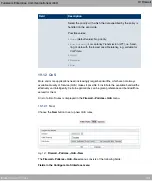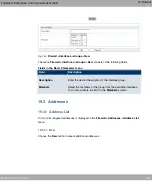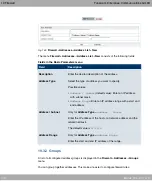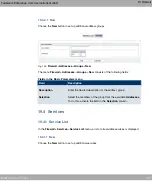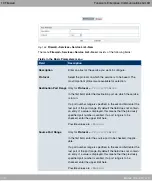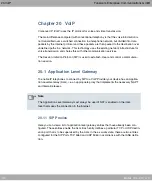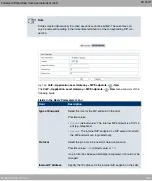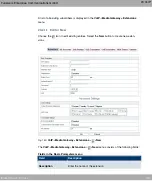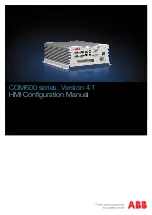
Chapter 20 VoIP
Voice over IP (VoIP) uses the IP protocol for voice and video transmission.
The main difference compared with conventional telephony is that the voice information is
not transmitted over a switched connection in a telephone network, but divided into data
packets by the Internet protocol and these packets are then passed to the destination over
undefined paths in a network. This technology uses the existing network infrastructure for
voice transmission and shares this with other communication services.
The Session Initiation Protocol (SIP) is used to establish, clear and control a communica-
tion session.
20.1 Application Level Gateway
To enable IP telephones to connect by SIP to a VoIP Provider your device has an Applica-
tion Level Gateway (ALG), i.e. an appropriate proxy that implements the necessary NAPT
and firewall releases.
Note
The Application Level Gateway must always be used if NAT is enabled on the inter-
face that makes the connection to the Internet.
20.1.1 SIP Proxies
Here you can view a list of application level gateway entries that have already been con-
figured. These entries enable the ALG. Each entry defines a particular TCP or UDP destin-
ation port that is to be supervised by the ALG. In the ex works state, there are two entries
configured for the SIP Ports TCP 5060 and UDP 5060 in accordance with the IANA defini-
tion.
20 VoIP
Funkwerk Enterprise Communications GmbH
382
bintec Rxxx2/RTxxx2




